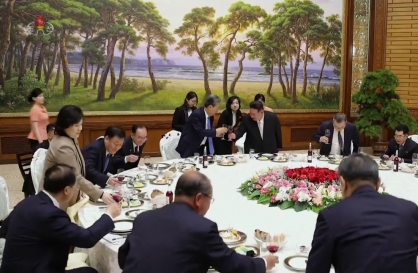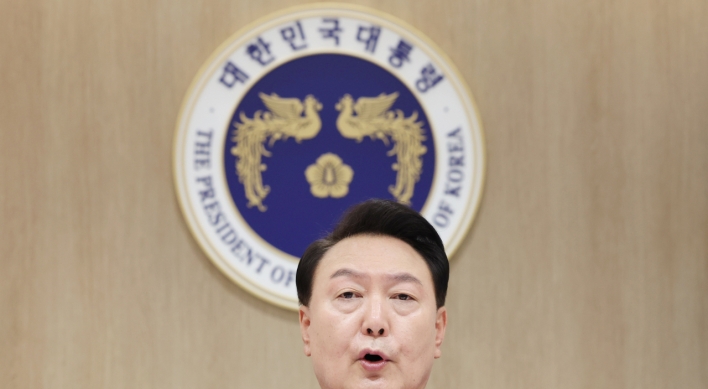Kim wants National Museum a multi-space for inspiration
By Claire LeePublished : Feb. 2, 2012 - 18:06
Former art history professor hopes to foster imagination of artists, visitors
Many thought it was an unexpected decision last year when the government appointed scholar Kim Young-na ― an art history professor at Seoul National University at the time ― as the new director of the National Museum of Korea to assume office last February.
Most of it had to do with her inadequate experience in traditional Korean art and history. For one, she obtained her Ph.D. in art history from Ohio State University in the U.S. Her research concentration has mostly been in Western art, while the museum had been committed to research activities in the fields of Korean history, archaeology and ancient relics.
But Kim, who had also served as the president of Association of Korean Modern and Contemporary Art History and Museum of Art, Seoul National University prior to her current position, managed to prove she is capable of the job during the first year of her term as the director.
Last year, the museum welcomed 3.3 million visitors (an increase from 3.1 million in 2010), holding highly informative and entertaining exhibitions including “European Masterpieces 1600-1800” and “The Secret of the Joseon Paintings.” It was also selected as the official storage for returned Uigwe from France last year, and showcased the royal books in an interactive, visual-oriented exhibition from July to September.
Many thought it was an unexpected decision last year when the government appointed scholar Kim Young-na ― an art history professor at Seoul National University at the time ― as the new director of the National Museum of Korea to assume office last February.
Most of it had to do with her inadequate experience in traditional Korean art and history. For one, she obtained her Ph.D. in art history from Ohio State University in the U.S. Her research concentration has mostly been in Western art, while the museum had been committed to research activities in the fields of Korean history, archaeology and ancient relics.
But Kim, who had also served as the president of Association of Korean Modern and Contemporary Art History and Museum of Art, Seoul National University prior to her current position, managed to prove she is capable of the job during the first year of her term as the director.
Last year, the museum welcomed 3.3 million visitors (an increase from 3.1 million in 2010), holding highly informative and entertaining exhibitions including “European Masterpieces 1600-1800” and “The Secret of the Joseon Paintings.” It was also selected as the official storage for returned Uigwe from France last year, and showcased the royal books in an interactive, visual-oriented exhibition from July to September.

“The year went by really quickly,” Kim tells the Korea Herald in her office in the museum, Wednesday. “The Uigwe exhibition was the most memorable event of the year. It was challenging to exhibit books and make the show interesting. But I think we did well.”
Now Kim is gearing up for more projects this year, in her efforts to make the museum into a multi-space where its visitors can be “inspired while feeling as if they are at home.” For one, an underground passageway connecting the museum and Ichon Subway Station will open in October, making the institution much more accessible to visitors. The passageway will be decorated with the marks of the Taegeuk, the Korean symbol for yin and yang. Geoulmot, the museum’s restaurant which has been serving both Korean and Western cuisine, will be transformed into a high-end authentic Korean cuisine-only dining space.
“You know, when I go to MoMA in New York, I sometimes drop by its museum shop only,” Kim says in her soft, almost little girl-like voice. “I think it’s an international trend for museums to become a multi-space for a lot of activities, aside from just enjoying exhibitions.”
Speaking of being international, Kim has a lot of things on her agenda this year. The museum is holding two overseas exhibitions featuring Joseon Celadon, one in Sao Paolo in Brazil and at Topkapi Museum in Turkey. Kim said the museum is also planning to do a tour in Asian Art Museum of San Francisco, the Metropolitan Museum of Art in New York, Los Angeles County Museum of Art as well as Paris in the coming years.
“These are very well-known museums and they attract visitors from all over the world,” Kim says. “So by exhibiting our relics in those institutions, we are showcasing our art to both Americans and foreign visitors who happen to be in the cities.”
For the first time this year, the museum is also starting a special two-week long educational program for foreign graduate school students who study Asian studies, where they will have an opportunity to research the relics showcased at the museum.
“This is a long term project,” Kim says. “We’ve been lending a lot of relics to Korean exhibition halls in overseas museum. While doing that, we’ve come to realize there aren’t enough curators who specialize in Korean art or history. So we are giving this opportunity for graduate students to witness Korean art and relics at our museum. And, who knows, maybe they’ll choose to research more on Korean art in future. The program isn’t only open for students who major in Korean studies. It’s open for anyone who has been studying about Asia.”
Among everything else, Kim says she wants the museum to be the source of inspiration for its visitors, especially the artists. “Of course it’s very important to take good care of the relics and research about them,” she says. “But I’d really like to see painters, sculptors, and even architects getting inspirations and source for imaginations while visiting here. Ancient relics are the classic, and they carry timeless values and beauty.”
By Claire Lee (dyc@heraldcorp.com)



















